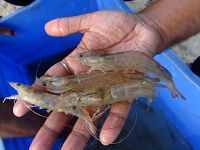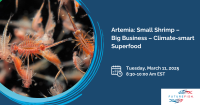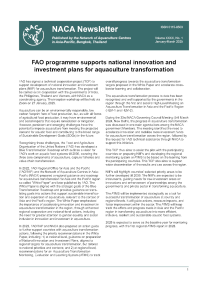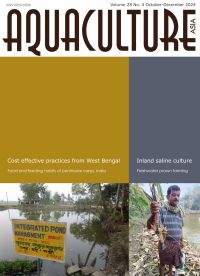India's shrimp farming industry plays a crucial role in the national economy, with Penaeus vannamei dominating production and exports. Despite India being one of the world's largest shrimp producers, domestic shrimp consumption remains low. This article explores the economic significance of farmed shrimp, the challenges faced by shrimp farmers in West Bengal, and the potential for expanding the domestic market to enhance industry sustainability. Promoting farmed shrimp consumption within India is a viable strategy to stabilize the industry. Increasing consumer awareness of shrimp’s health benefits, developing efficient distribution networks, and leveraging marketing initiatives could enhance domestic demand. Government agencies, industry associations, and private enterprises must collaborate to establish shrimp as a mainstream protein source in Indian diets, thereby ensuring long-term sustainability for shrimp farmers.
This webinar will focus on artemia, a small brine shrimp found naturally in hypersaline ecosystems – salt lakes, salt pans and salt works across the world. Presenters will explain artemia’s unique role in the aquatic ecosystem and explore ways for future investment opportunities. The webinar will be held from 12:30-14:00 GMT on 11 March.
The shrimp has rare biological characteristics that enable it to thrive in saline environments under climate change stress, and special nutritional properties that have made it an essential product for fish and shrimp hatchery production across the world, contributing directly to the sustainable production of over 10 million tons of high-value aquaculture products. Artemia is also emerging as a unique product with applications beyond aquaculture hatcheries, and its potential in animal and human food production in climate-stressed ecosystems.
With the implementation of the new aquatic animal disease reporting in the Asia Pacific region from January 2021 NACA is publishing reported aquatic animal diseases submitted by countries in the Asia-Pacific region. This report covers the third quarter of 2024 and the original and updated reports can be accessed from the QAAD page.
In this issue:
- FAO programme supports national innovation and investment plans for aquaculture transformation.
- 14th Asian Fisheries Forum, 12-15 February 2025 register now!
- Saudi International Marine Exhibition (SIMEC) 3-5 February 2025, Riyadh.
- Workshop on Sustainable Brine Shrimp Artemia Cultivation, 17 February, Tashkent.
- Status, technological innovations, and industry development needs of mud crab (Scylla spp.) aquaculture.
- Global Seaweed: New and Emerging Markets Report 2023.
In this issue:
- Some practices and techniques in cost-effective small and medium-scale aquaculture in West Bengal
- Food and feeding habits of some peninsular carps
- Inland saline aquaculture: Prospects and challenges
- A success story of freshwater prawn farming as an alternative livelihood for self-help and user groups in Mayurbanja District, Odisha, India
- NACA Newsletter



